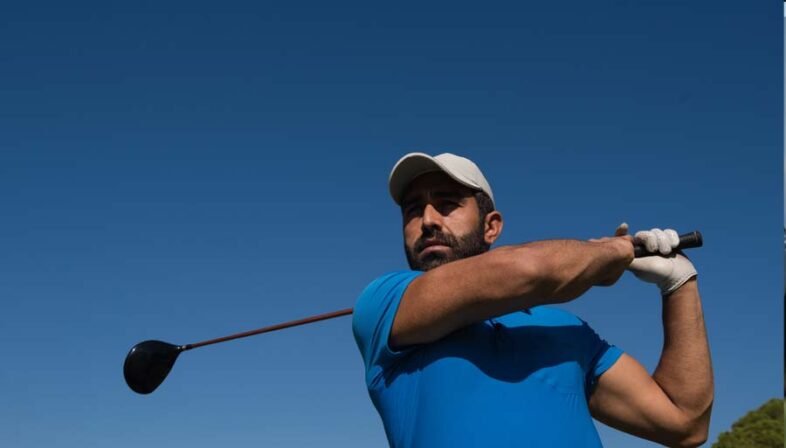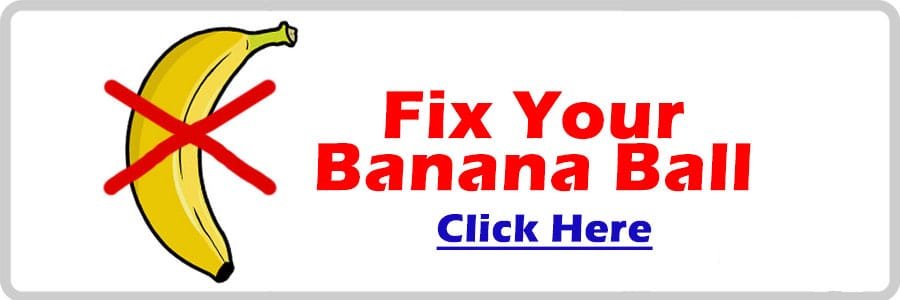Have you been struggling with that pesky slice in your golf game? If so, you’re not alone! A slice can be frustrating, but what if I told you that a flatter swing could quickly help you fix it? Let’s dig into how making this adjustment can improve your shots and enhance your overall golfing experience.
Understanding the Slice
First, let’s clarify what a slice is. A slice occurs when the ball curves to the right for a right-handed golfer (and to the left for a left-handed golfer) as it moves through the air. This common issue can ruin a round of golf and lead to inconsistent performance, but breaking it down can help you understand it better.
Causes of a Slice
Several factors contribute to a slice, and identifying the one affecting you is crucial. Here are a few primary causes:
- Open Clubface: When the clubface is facing away from the target at impact, it results in a slice.
- Outside-In Swing Path: Swinging down from the outside can also lead the ball to curve right.
- Poor Grip: A weak grip can help keep the clubface open, leading to slicing.
Recognizing these causes is the first step toward improvement. Understanding these elements will help you pinpoint where your swing might need adjustment.
What Is a Flatter Swing?
You might be wondering what a flatter swing actually means. In simple terms, a flatter swing refers to the angle at which your club travels on the way back and down through the ball. Rather than a steep, vertical motion, your club moves more horizontally.
The Benefits of a Flatter Swing
A flatter swing can provide several benefits for you:
- Reduced Slice: It can help you achieve a more desirable swing path and better clubface positioning at impact.
- Increased Consistency: With a more predictable swing path, you’re likely to see more consistent results.
- Improved Distance: A flatter swing can generate more power through a more efficient transfer of energy.
Visualizing the Flatter Swing
When you visualize a flatter swing, think of a pendulum moving horizontally rather than swinging steeply up and down. Picture the club moving along an arc that’s lower to the ground. This adjustment can significantly influence how your ball travels.
How to Achieve a Flatter Swing
Let’s talk about how you can achieve a flatter swing. Implementing the following techniques can help you modify your swing quickly.
Adjust Your Grip
To begin with, evaluate your grip. A proper grip can enhance your control over the clubface.
Steps to Adjust Your Grip:
- Rotate your hands: Shift your hands slightly on the club to strengthen your grip.
- Check your pressure: Maintain a light grip pressure; squeezing the club too tightly can lead to tension and an awkward swing.
Here’s a simple table summarizing grip adjustments:
| Grip Type | Description | Benefits |
|---|---|---|
| Neutral Grip | Hands parallel to the target | A balanced clubface position |
| Strong Grip | Hands rotated slightly to right | Keeps clubface from opening |
| Weak Grip | Hands rotated slightly to left | May increase slice tendency |
Modify Your Stance
Your stance significantly influences your swing. A proper stance can help set you up for a flatter swing.
Steps to Modify Your Stance:
- Widen your feet: A stable base can provide better balance during your swing.
- Bend at the hips: Lowering your torso helps create a flatter angle.
Check out this table to understand the stance better:
| Element | Recommendation |
|---|---|
| Foot Position | Shoulder-width apart |
| Knee Flex | Slight bend for stability |
| Hip Bend | Lean forward slightly |
Work on Your Swing Path
The swing path is crucial in achieving a flatter swing. Aiming for an inside-to-out swing can help reduce slicing.
Steps to Work on Your Swing Path:
- Start inside: Allow your club to move back inside your feet on the takeaway.
- Follow through: Keep your swing path on an inside-to-out trajectory.
To clarify this concept, let’s break it down with a table:
| Swing Path Direction | Description | Effect on Slice |
|---|---|---|
| Outside-In | Club travels from outside target | Increases chance of slicing |
| Inside-Out | Club travels towards the target | Decreases slice |
Practicing Drills for a Flatter Swing
Practicing drills can reinforce these changes. Incorporate these exercises into your practice routine to see improvements.
Drill 1: The Half-Swing Drill
This drill encourages a flatter swing while maintaining control.
- Take your set-up position with a slight bend at the hips.
- Make half swings focusing on keeping the club low to the ground on the backswing.
- Repeat several times, feeling the difference.
Drill 2: The Toe-Tap Drill
This drill can help train your body to shift weight correctly, supporting a flatter swing path.
- Begin in your normal stance.
- As you start your swing, lift your lead foot slightly and tap your toe down as you begin your downswing.
- Focus on keeping your swing flat and controlled.
Drill 3: The Alignment Stick Drill
Using alignment sticks can visually help reorient your swing path.
- Place an alignment stick along the target line at your feet.
- Position a second stick parallel next to your club’s intended swing path.
- Practice swinging without hitting the sticks, aiming for an inside-to-out swing.
Adjusting for Different Clubs
Not all clubs will react the same way when you alter your swing. Each club has its dynamics and characteristics, which may require slight changes in your approach.
Driver Adjustments
A driver typically requires a more pronounced flattening of the swing due to its length. Focus on your stance and angle to maximize distance while attempting to correct for slices.
Iron Adjustments
With irons, ensure your swing remains low but consider adding a bit more verticality during your downswing to establish a descending blow on the ball.
Wedge Adjustments
When using wedges, the flat swing should still be controlled. Focus on precision rather than power to keep the ball on target.
Additional Considerations
While working on your flatter swing, keep in mind some additional factors that can help your game.
Physical Conditioning
Your physical condition can play a role in your swing mechanics. Regular stretching and strength training can enhance flexibility and overall performance.
Mental Approach
Golf is as much a mental game as it is a physical one. Stay patient and positive as you work on these adjustments. Building a better swing takes time.
Tracking Your Progress
Monitoring your improvement can be an excellent way to maintain motivation. Keep track of your rounds, focus on areas of success, and recognize aspects that still need attention.
Use a Golf App
Consider using a golf app for tracking statistics. Many apps offer round analysis and can give you insights into your swing, providing feedback on areas requiring focus.
Analyze Video
Use video recording to review your swing. Compare your progress over several practice sessions to observe noticeable improvements and adjustments.
Conclusion
Adjusting to a flatter swing can be one of the quickest ways to tackle a slice head-on. By focusing on grip, stance, swing path, and dedicated practice, you can enjoy more consistent and accurate shots. Remember that improvement takes time, so be patient with yourself as you refine your technique.
The journey toward fixing your slice starts with understanding and implementing these changes to your swing. Keep practicing, and soon, you’ll be hitting straight shots with more confidence on the course!








